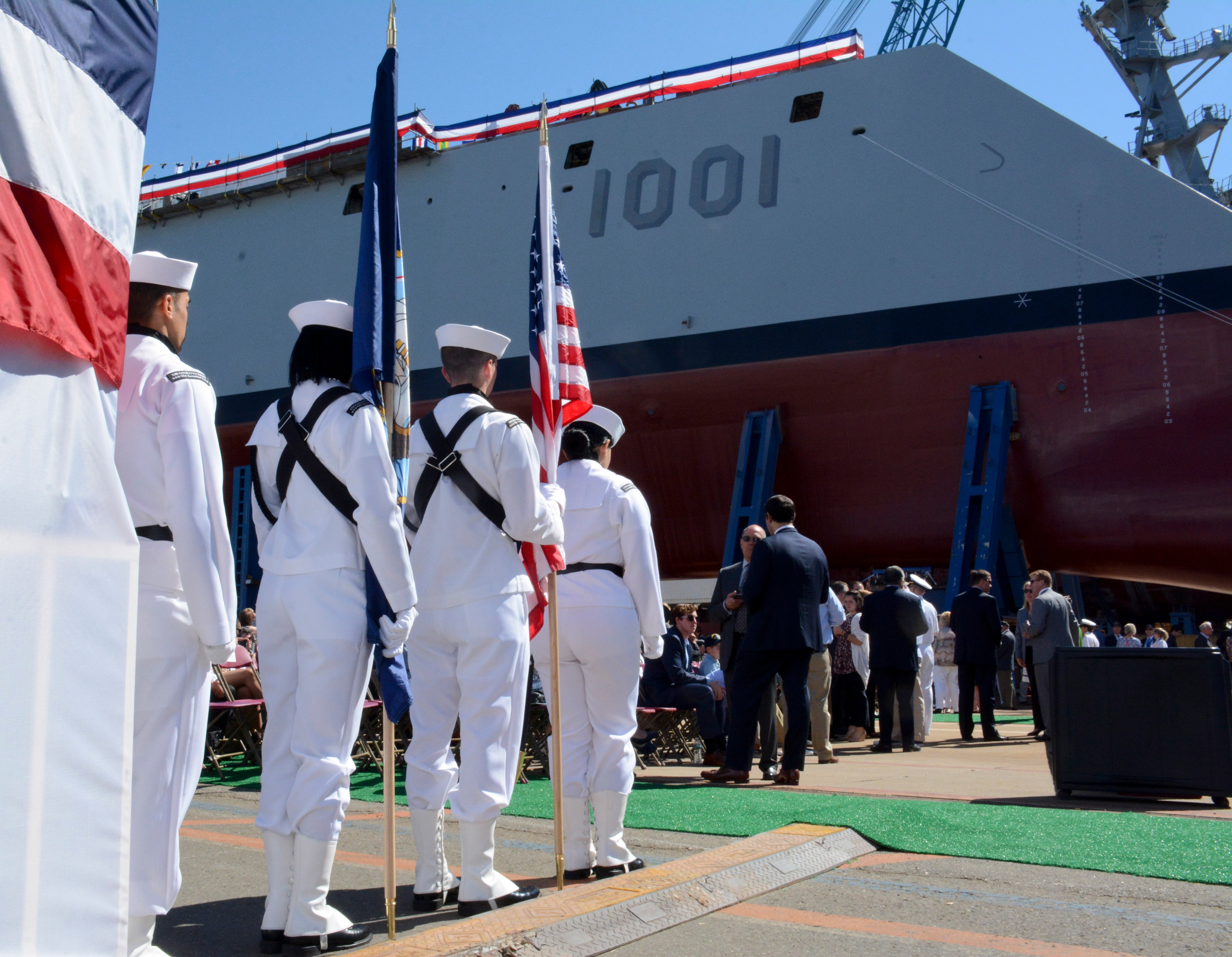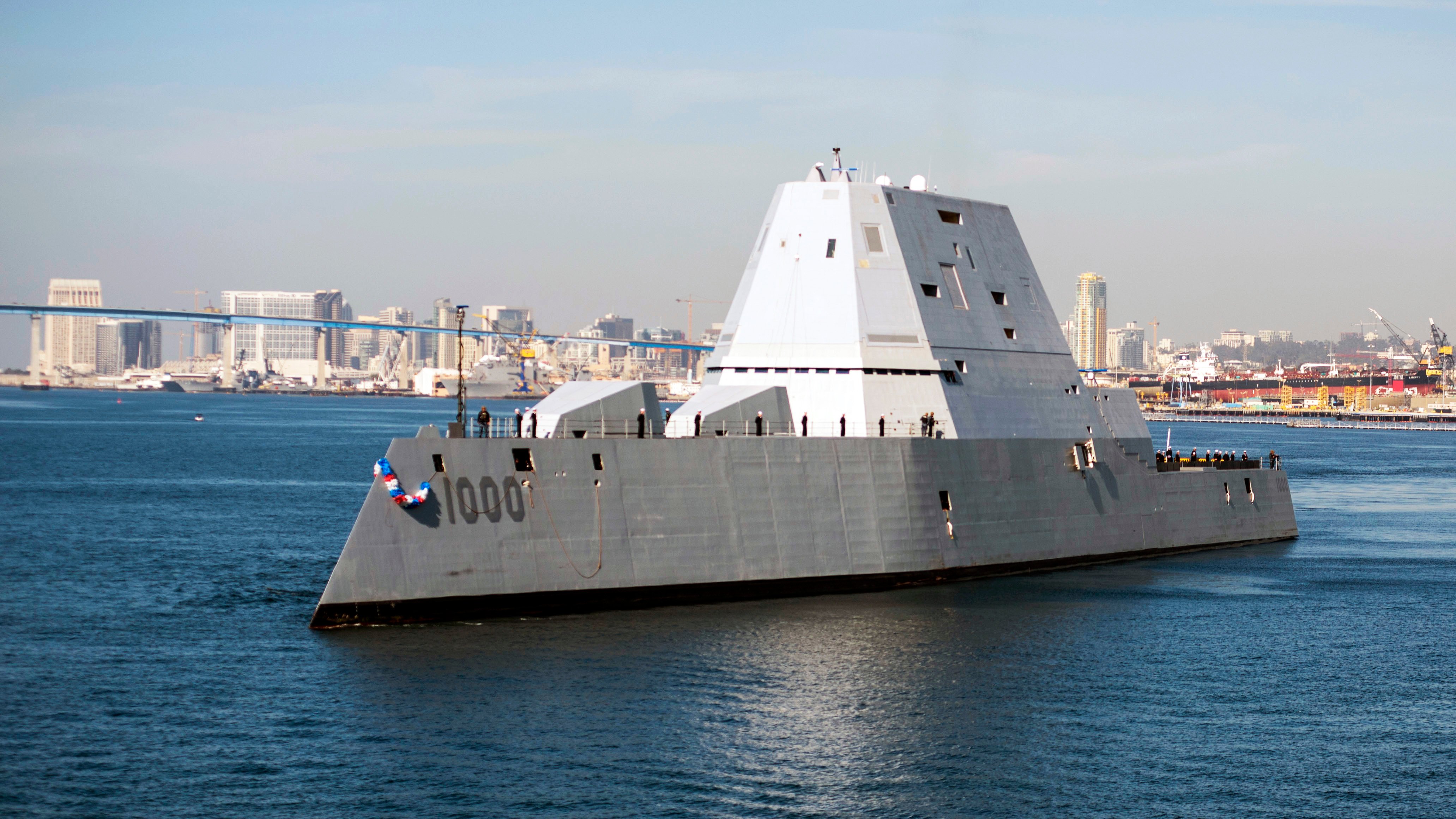
Problems with the complex electrical system on the second-in-class Zumwalt destroyer ended builders trails early and forced the ship to return to the General Dynamics Bath Iron Works shipyard in Maine, according to a statement from Naval Sea Systems Command.
According to NAVSEA, a harmonic filter aboard Michael Monsoor (DDG-1001) failed one day after the ship left the yard on Dec. 4. The ship returned to the yard on Dec. 5.
Harmonic filters are used in complex electrical systems to prevent unintended power fluctuations from damaging sensitive equipment.
The loss of the filter prevented the ship from running its complicated electric drive system at full power as part of the testing that was intended to be carried out during the trials.
The Associated Press first reported the trials were abbreviated due to a mechanical issue last week.

NAVSEA said the delay in sea trials would not affect Monsoor’s expected March 2018 delivery.
The heart of the Zumwalt-class is a complex electric grid that’s powered by two Rolls Royce MT-30 gas turbines and two Rolls Royce MT-5 auxiliary gas turbines. The Integrated Power System can generate more than 75 megawatts of power and drive a complex electrical grid that powers the ship’s systems and massive electric motors to move the ship in the water. The amount of electricity generated and routed on the Zumwalt-class is unprecedented in any other non-nuclear surface ship.
USS Zumwalt (DDG-1000) was delayed in delivering to the Navy in 2016 after a series of complex tests into the electrical system took longer than expected. While underway from Maine to its new homeport at Naval Station San Diego, Calif., Zumwalt suffered several delays due to unpredicted problems in its IPS system that were corrected earlier this year.
The Navy is working to change the mission of the planned $23-billion three-ship class from a land-attack platform that would support troops ashore to a surface-strike platform to conduct stealthy anti-surface warfare.





